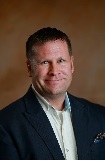In a world filled with advancing technology, risk managers need to understand trends to better predict and address future challenges. Most technology predictions that appear in magazine articles or marketing materials are exaggerated visions of more and faster.
Reality, influenced by human interaction, is often more realistic. Tomorrow is likely to arrive with smaller improvements in illness detection, communication, prediction, automation and speed than marketed in magazine articles today. As technology emerges, it will be molded by people….both injured workers and those caring for them….to better fit into the human experience and create optimal outcomes. In this case, the best outcomes are often provided by a balance between technology (logic) and caregivers (empathy).
Risk Modeling
Predictive modeling often consists of monitoring thousands of metrics collected over time to develop a pattern of “normal” behavior. These patterns are then used to help identify anomalies that contribute to risk. This technology is invaluable in predicting catastrophic weather, stress failures, machine maintenance requirements and other scenarios that might influence injury or damage on the job site.
Metric tracking is also growing in health and medicine. For example, wearables can be used to track vitals of workers on-site and off-site, helping to identify chronic issues as well as short-term metrics such as heart-rate, respiration, geo-location, or temperature, that can contribute to injury.
However, people are not simply collections of metrics. Privacy issues need to be considered for all employee monitoring that is enacted. Employees need to be both physically and mentally comfortable with the devices they are expected to wear or work around. While we have the ability to collect more data than ever before, it is still far from complete and suffers from generalizations, averaging and historical patterns. No individual person is “average”, no data set complete, and no current scenario exactly like the past.
Logic: More data = better predictions. Monitor, collect and study everything.
Empathy: Respect the privacy and uniqueness of individuals in the workplace. Some cases may justify the “average” for prediction, but other cases may need to be more specific.
Communication
There are more methods of communication available to injured workers today than ever. Phone calls and email have expanded to include text notification, artificial intelligence (AI) chatbots, live chat, and even interactive voice response robots.
Best practice dictates users are allowed to pick the most convenient method of communication to meet their own needs. Optimally, provide the end user options. Age, access to technology, specific use case and general personal preference can cause users to select different channels.
Companies can leverage technology to expand the channels offered and provide 24/7/365 coverage by using automated AI methods and allowing electronic intake and reporting. For example, organizations can make investments to simplify the worker’s compensation process for claimants. Technology can provide reminders on medication refills, physical therapy sessions and follow-up visits or provide status updates such as where they are in the process. Technology can also reference past communication to help understand preferences and individual traits. That said, some scenarios and individuals will always want a human touch. Organizations should staff great people to back-up technology for optimal results.
Logic: More channels, more availability, and more data = better communication with technology.
Empathy: It needs to be timely, appropriate and easy to understand. Some scenarios and users will need a human touch.
*The views and opinions expressed in the Public Risk Management Association (PRIMA) blogs are those of each respective author. The views and opinions do not necessarily reflect the official policy or position of PRIMA.*

By: Stephen Elliott, MBA, JD, CISSP, CSM
Senior Vice President, IT Innovation and Decision Optimization, Sedgwick
Stephen is the SVP of IT innovations at Sedgwick in Memphis, TN. In this role, he is driving IT to leverage new technologies and stay ahead of the competition. Previously, Steve has built and led a multi-disciplinary team (140+ team members) supporting the application design, development and maintenance for the disability and leave line of business at Sedgwick. Prior to joining Sedgwick in 2005, Steve worked at Deloitte Consulting and was a partner in several consulting firms, specializing in technology financial management.



